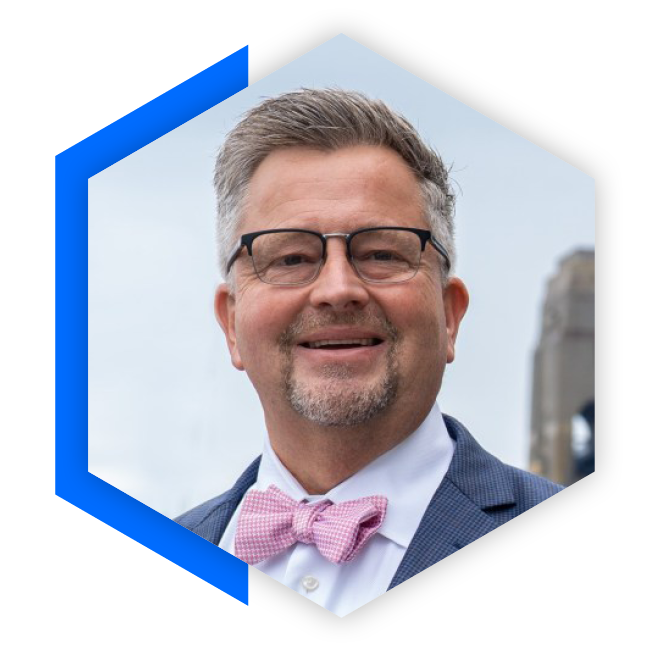Risk & Resilience by Design Workshop
Michael Rasmussen
DATE: |
THU 24 APRIL 2025 |
VENUE: |
Andaz London Liverpool Street
|
|
|
|

Workshop Summary
Gone are the years of simplicity in business operations. Exponential growth and change in risks, regulations, globalization, distributed operations, competitive velocity, technology, and business data encumber organizations of all sizes.
Keeping changes to business strategy, operations, and processes in sync is a significant challenge for boards, executives, and management professionals throughout all levels of the business. The interconnectedness of objectives, risks, resilience, and integrity require 360° contextual awareness of risk and resiliency.
Organizations must see the intricate relationships and impacts of objectives, risks, processes, and controls. It requires holistic visibility and intelligence into risk and resiliency. The complexity of business – combined with the intricacy and interconnectedness of risk and objectives – necessitates organizations implement a strategic approach to business and operational risk and resilience.
REGISTER NOW
Objectives of the workshop:
Attendees will take back to their organization’s approaches to address:
- Effectively managing risk and resilience
- Understand the challenges and pitfalls of managing risk and resilience
- Achieve success by capitalizing on agility while maintaining risk and resilience
- Facilitate ongoing monitoring of risk and resilience
- Define a risk and resilience management lifecycle
- Provide risk and resilience management process consistency
- Communicate effectively with employees and stakeholders on matters of risk and resilience
- Track critical risk and resilience workflow and tasks
- Deliver effective risk and resilience governance and assurance to the board of directors, regulators, and stakeholders
- Monitor metrics to establish effectiveness or risk and resilience management
- Identify and resolve risk and resilience issues
Organizations take risks all the time but fail to monitor and manage these risks effectively in an environment that demands agility. Too often, risk management is seen as a compliance exercise and not truly integrated with the organization’s strategy, decision-making, and objectives. It results in the inevitable failure of risk management, providing case studies for future generations on how poor risk and resiliency management leads to the demise of organizations – even those with strong brands.
Keeping risk, complexity, and change in sync is a significant challenge for the organization’s boards, executives, and management professionals. This challenge is even greater when risk management is buried in the depths of departments and approached from a compliance or audit angle, not as an integrated discipline of decision-making that has a symbiotic relationship with performance and strategy.
This is further compounded when business continuity programs are completely disconnected and not part of risk management. Organizations need to understand how to monitor risk-taking, measure that the associated risks are the right risks, and review whether the risks are managed effectively to ensure the organization’s resilience.
The ecosystem of business objectives, uncertainty/risk, and integrity is complex and interconnected and requires a holistic, contextual awareness of the organization – rather than a dissociated collection of processes and departments.
Change in one area has cascading effects that impact the entire ecosystem. This interconnectedness of business demands 360° contextual awareness in the organization’s risk and resilience processes to reliably achieve objectives, address uncertainty, and act with integrity.
Organizations must see the intricate intersection of objectives, risks, and boundaries across the business. Firms globally and across industries are focused on integrating risk management and resilience (historically business continuity/disaster recovery) programs.
This is becoming a key regulatory requirement in some industries. Delivering this requires a holistic view of the objectives and processes of the organization in the context of uncertainty and risk and the symbiotic interaction of risk management and business continuity.
This workshop aims to provide a blueprint for attendees on successful risk and resilience management with an integrated strategy, process, information, and technology architecture.
Objectives of the workshop:
Attendees will take back to their organization’s approaches to address:
- Effectively managing risk and resilience
- Understand the challenges and pitfalls of managing risk and resilience
- Achieve success by capitalizing on agility while maintaining risk and resilience
- Facilitate ongoing monitoring of risk and resilience
- Define a risk and resilience management lifecycle
- Establish risk and resilience management ownership and accountability
- Provide risk and resilience management process consistency
- Communicate effectively with employees and stakeholders on matters of risk and resilience
- Track critical risk and resilience workflow and tasks
- Deliver effective risk and resilience governance and assurance to the board of directors, regulators, and stakeholders
- Monitor metrics to establish effectiveness or risk and resilience management
- Identify and resolve risk and resilience issues
Agenda:
Part 1: Risk & Resilience by Design
Why Risk & Resilience Management Matters
- Risk and Resilience in Disarray: how organizations mismanage risk and resilience
- Risk Exposure: how mismanaged risk expose the organization
- Current drivers & trends on organizations in risk and resilience management
- Different ways organizations approach risk and resilience management
- What Effective Risk & Resilience Management Achieves
Part 2: Risk & Resilience Governance
Blueprint for Effective Risk & Resilience Management
- Risk & Resilience Governance Committee: bringing together the range of risk and resilience roles and responsibilities in the organization
- Risk & Resilience Management Charter: defining a structure to govern risk and resilience across the organization
- How to Develop a Risk & Resilience Management Strategic Plan
Part 3: Risk & Resilience Management Lifecycle
Managing Risk & Resilience in Context of Business Change
- Risk identification
- Ongoing risk and internal/external business context monitoring
- Risk assessment, business impact assessments, and scenario planning
- Risk treatment and engagement with the business
- Risk & resilience metrics & reporting
- Risk & resilience evaluation, benchmarking & assurance
Part 4: Risk & Resilience Management
Architecture Enabling Information & Technology Management for Risk & Resilience Management
- Risk & Resilience Management Information Architecture: Blueprint for Managing Risk & Resilience Content and Related Data
- Types of risk and resilience management information and how it integrates into risk management processes
- Components and requirements for a compliance information architecture
- Risk & Resilience Management Technology Architecture: Blueprint for Enabling Risk & Resilience Management Processes with Technology
- Kinds of risk and resilience management technologies and what best serves the organization
- Capabilities and requirements of risk and resilience management platforms
- Risk & Resilience Management Business Case: Articulating the Value of Effective Risk & Resilience Management
Schedule:
| 09:00am | Breakfast |
| 09:30am | Part 1: Risk & Resilience by Design |
| 11:00am |
Mid Morning Break (Biscuits, Tea & Coffee) |
| 11:30am |
Part 2: Risk & Resilience Governance |
| 12:30pm | Buffet Lunch |
| 13:30pm | Part 3: Risk & Resilience Management Lifestyle |
| 14.30pm | Mid Afternoon Break (Biscuits, Tea & Coffee) |
| 15:00pm |
Part 4: Risk & Resilience Management |
| 16:30pm | Drinks Reception & Canapes |
| 18:30pm | End of Day |
Breakfast, lunch, drinks & canapes provided.


GRC 20/20 Speaker Michael Rasmussen
GRC 20/20 Research Michael Rasmussen – The GRC Pundit @ GRC 20/20 Research, Michael Rasmussen is an internationally recognized pundit on governance, risk management, and compliance (GRC) – with specific expertise on the topics of GRC strategy, process, information, and technology architectures and solutions.
With 30+ years of experience, Michael helps organizations improve GRC processes, design and implement GRC architectures and select solutions that are effective, efficient, and agile. He is a sought-after keynote speaker, author, and advisor and is noted as the “Father of GRC” – being the first to define and model the GRC market in February 2002 while at Forrester Research, Inc.
Any questions?
The Decision Focus team are here to answer your questions.

